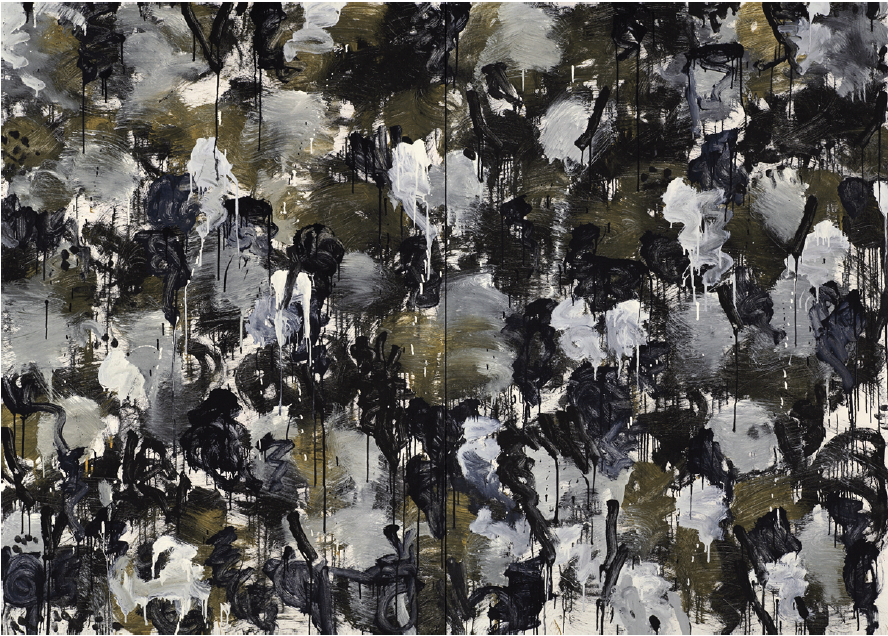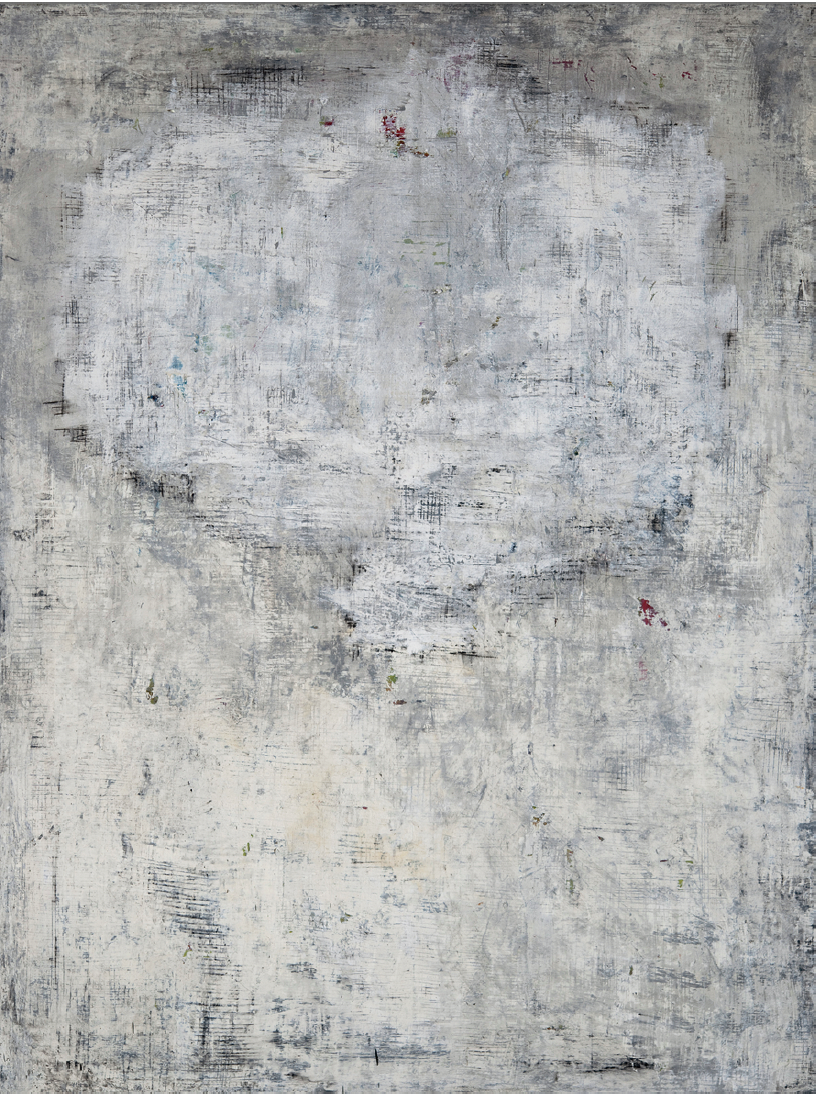“The Point Is”
In recent decades, painting’s wilful self-contamination from within and without has been key to its longevity and has kept it interesting and often unpredictable. But is painting biting its tail again, attempting to purify itself, taking itself too seriously? Any art discipline as cannibalistic and cyclical as painting is always negotiating the proverbial razor’s edge: too dull, time to change? sharp enough to cut a new path through all the old growth? still relevant? It doesn’t hurt to ask. That the technical and material vocabulary of contemporary painting appears to be wholly indebted, if not altogether bound, to a historically determined corpus was amply apparent in a recent group exhibition at the Kelowna Art Gallery titled “The Point Is,” featuring recent work by artists Pierre Coupey, Landon Mackenzie, Bernadette Phan, Bryan Ryley and Martin Pearce. In her catalogue foreword, KAG curator Liz Wylie explains that she selected these artists because “…they each work in an energized zone of overlap or fold between abstraction and representation.” While not breaking new ground, this comment does provoke the question: what is it about these five artists’ work that makes this collapsed binary worth revisiting? In an exhibition that was decidedly concerned with the abstract, certainly from a visual standpoint, even a cursory survey of these artists’ stylistic approaches within the extensively chronicled idiom of abstraction yielded numerous representations of abstract art’s historical legacy. Abstraction is in a rather unique category if everything is understood to be a representation; for when calculating the relationship of form to content, the meaning of the form is often determined by its immediate referent, and in abstract art that referent, in this case representation, is invariably other abstract art.

Pierre Coupley, Riverbank I (for RB), 2008-2009, oil on canvas over panel, diptych, overall size, 60 x 84”. Collection of the artist. Images courtesy the Kelowna Art Gallery.
In certain cases, such as the painting titled Houbart’s Hope (Yellow) Crimson Lake, 2001-04, by Landon Mackenzie or in Bryan Ryley’s Algebra for the Practical Man, 2011, the annexing of disparate historical motifs from abstract painting appears to be strategic, and presumably done for the attendant effect. Yet for the other artists, the marriage of appropriation and origination seem almost entirely motivated by fidelity to the dominant abstract genre, and if it’s otherwise, representations external to the artworks’ historical pedigree are so deeply sublimated as to be virtually inaccessible; as for example, in work centred in process and the monochrome (Martin Pearce), all-over gestural painting (Pierre Coupey) and pointillist opticality (Bernadette Phan). This is not a bad thing necessarily, but the burden of history gets heavier closer to the source, and that self-reflexive proximity, based on how it’s handled, can be challenging.
In the Bryan Ryley work, Algebra for the Practical Man, a collaged 1950s-era, orange-coloured book jacket is mounted near the centre of a large abstract backdrop surface worked in shades of blue-black, brown, and white acrylic and gel medium, trowelled, scraped and stencilled over a raised grid pattern of dots. Because of its singularity and placement, the collaged book jacket, from which the painting’s title is derived, reroutes everything it might otherwise mean, then and now, through the historical mediation of artist Robert Motherwell and, before him, artwork as far back as early Cubist collage. This and the two other Ryley paintings in the exhibition are, as the artist informs us in the catalogue, produced as requiems, with the “Algebra” painting as a remembrance of his father. Be that as it may, a reading of this work across problems of representation and abstraction must take into account its structuring of recombinant form and content culled from abstract painting’s history. Landon Mackenzie is represented by two large canvases. One is informed by her research of mapping the external world and the other is based on neurology and mapping of the human brain. The former, titled Houbart’s Hope (Yellow) Crimson Lake, is the most directly representational work and, along with Ryley’s paintings, the most impure in the exhibition. In Houbart’s Hope deliberate mark making, lettering, and diagrammatic lines and shapes coexist with paint deployed through controlled accidents and chance. The result is a multi-pronged dialectic of abstraction and representation orchestrated by a range of abbreviated and fragmented indices of their many associative models; in this, any number of referents may be garnered, and prominent among them as a guiding leitmotif is the handcrafting of each and every individual feature of the canvas.

Martin Pearce, Mercury and Electricity, 2010, oil and grease pencil on canvas, 72 x 54”. Collection of the artist.
Handcrafting is one of painting’s primary attractions for artists and audience alike. The identifying characteristics of a painting’s materiality and accretion of brush marks and paint deposits are often associated with the artist’s hand. In greater or lesser degrees, such inflections of personality in paint handling may be found in each of the artist’s work, as for example Martin Pearce’s finessing of tonal modulations, or Bernadette Phan’s delicate pigment deposits, but, as in the analysis of form and content, technique is also filtered through its models of critique. In consideration of the importance of contextuality in establishing meaning and judgment, Landon Mackenzie arguably comes across as the least concerned with taking an academically correct stance toward models of self-reflexive criticism, as she uses her quite extensive tool box to invent, twist and corrupt everything from the coherence of the optical field to mark making, symbols and drips. Indeed this can be said about the entire composition when taken from a classic formalist analysis, and/or from the logic of the representation (in Houbart’s Hope)—the mapping of a geographical landmass. In our current era of post-postmodernism, where the legacies of both modernism and postmodernism must be taken into account, the locus of one’s practice requires serious consideration. Abstract art is not immune. It faces the same challenges and opportunities as other genres or mixed genres and, consequently, might want to consider its many options before taking itself too seriously. ❚
“The Point Is” exhibited at the Kelowna Art Gallery, August 20 to October 30, 2011.
Gary Pearson is an artist and associate professor at UBC Okanagan in Kelowna.

